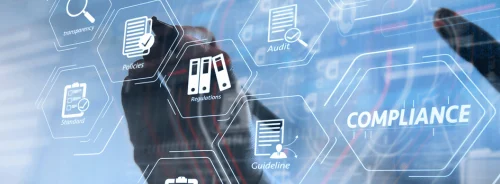Electronic Health Record (EHR) transitions, a colossal technological and operational hurdle, are a defining feature of modern healthcare systems. Clinicians are tasked with mastering new technologies, reshaping their daily routines and workflows, all while upholding the continuity and quality of patient care. The Department of Veterans Affairs (VA), the largest integrated healthcare system in the United States, is currently undergoing a monumental EHR transition from its legacy system, CPRS/VistA, to Oracle Cerner Millennium. A recent article from JAMIA Open delves into the VA’s experience, particularly focusing on the Mann-Grandstaff VA Medical Center (MGVAMC) in Spokane, Washington, the first site to implement the new system. It highlights the challenges faced, strategies for improvement, and lessons for future EHR transitions.
Challenges of EHR Transitions
EHR transitions require clinicians to unlearn established practices and adapt to new workflows in real time. This process is inherently stressful and can significantly disrupt clinical operations. At MGVAMC, the initial rollout of Cerner Millennium on October 24, 2020, exposed several system design flaws and implementation challenges that negatively impacted user experience.
One of the primary challenges was the decreased usability of the new EHR system. Survey data indicated a significant drop in EHR usability scores post-transition, with comparisons between pre-go-live and two months post-go-live showing marked declines. Four out of five measures remained statistically significant compared to pre-go-live, indicating sustained dissatisfaction. Interview data corroborated these findings, with participants reporting that the new system created additional work and slowed productivity. Clinicians described the EHR as cumbersome, with poorly designed interfaces that impeded their ability to deliver efficient care.
Insufficient training was another major issue. Participants expressed dissatisfaction with the training content, noting that it was not tailored to their specific roles or workflows. The inability to practice using the new EHR in a live production environment further compounded these problems. Many clinicians felt unprepared for the transition, leading to frustration and decreased confidence in using the new system. The training provided was often generic and failed to address the unique needs of different clinical roles, making it difficult for staff to grasp the system’s functionalities fully.
Lack of support exacerbated these challenges. Participants reported dissatisfaction with the responses to user-identified EHR issues and the overall support system. Communication about the status of submitted tickets was often slow and lacked transparency, causing clinicians to resort to submitting formal tickets only for the most disruptive problems. The inadequate support mechanisms led to increased stress and hindered the overall transition process.
Strategies for Improvement
Addressing the challenges of EHR transitions requires robust change management strategies. The VA engaged Health Systems Researchers and the National Center for Patient Safety (NCPS) to optimise the transition process, identifying several effective strategies:
- Comprehensive Training Programs: Tailored, practical training is crucial for a successful EHR transition. Training should be relevant to individual roles and clinical workflows, providing ample pre-go-live protected time for practice in the live production environment. Utilising peer instructors with specific knowledge of clinical processes can enhance training effectiveness and user confidence. Participants at MGVAMC emphasised the need for training that demonstrates how individual tasks fit into broader clinical workflows, allowing them to understand the practical application of the new system.
- Robust Support Systems: Continuous, responsive support is essential during and after the transition. Effective mechanisms for reporting and resolving issues, including transparent communication about the status of submitted tickets, can alleviate user frustration. Local leaders at MGVAMC implemented demonstrations and shared knowledge through Microsoft Teams, creating a 24/7 problem-solving resource. This approach highlights the value of locally tailored support networks, which can provide immediate assistance and reduce disruptions during the transition.
- Transparent Communication: Leadership must convey an understanding of users' experiences, acknowledging both positive and negative aspects of the transition. Accurate and empathetic communication can mitigate stress and build trust. Participants at MGVAMC noted that initial communications were overly positive and disconnected from their realities, emphasising the need for messages that reflect the actual challenges faced by staff. Effective communication should validate end users’ struggles, provide emotional support, and promote open discussion of issues and solutions.
Implications for Future Transitions
The VA’s experience provides valuable insights for other healthcare systems undertaking EHR transitions. Key lessons include the importance of addressing system design flaws before rollout, ensuring training is relevant and practical, and maintaining strong support and communication systems. Moreover, understanding and mitigating the impact of transitions on clinician and staff well-being is critical. The transition at MGVAMC highlighted how poorly managed changes can lead to increased stress and burnout, underscoring the need for organisational strategies to support staff through these periods.
Addressing system design flaws is paramount. Effective EHR training requires close collaboration with clinical teams to create relevant content, promote acceptance of change, and ensure the fit of redesigned clinical processes. Peer instructors can improve training satisfaction and help with knowledge of site- and role-specific clinical processes. Training should continue post-transition and include opportunities for self-directed learning to improve user confidence and system reliability.
End users expect transparent and timely responses to emerging issues and need reliable mechanisms to voice their concerns, report and elevate issues, and suggest improvements. Guidance, support, and updates, including ticket resolution status, should be easily accessible and readily available. Leadership should provide supervisors with the time and training to support effective peer-to-peer support. Site- and role-specific peer support networks that engage experienced users to disseminate lessons may be an effective tool to minimise disruptions at future sites.
Clinician and staff burnout is an ongoing crisis within healthcare systems, and evidence suggests this may, in part, be due to EHR use. Findings from MGVAMC demonstrated worsening feelings of burnout during the EHR transition. To effectively mitigate burnout, the healthcare system and EHR vendor should address the issue head-on, incorporating policies and interventions that reduce stress related to EHR transitions. Supportive learning environments can promote confidence and may mitigate stress and burnout associated with the transition. Leaders may consider launching employee support programs to address stress and burnout related to EHR transitions directly. Recent calls by researchers to improve EHR usability through user-informed redesigns highlight the need to hold vendors responsible and follow through on promised claims of improved efficiency and workflows.
The VA’s EHR transition, particularly the experiences at MGVAMC, underscores the complexity and challenges of implementing new health information technologies in large-scale healthcare systems. Effective change management strategies, including tailored training, robust support, and transparent communication, are essential to navigate these transitions successfully. As the VA continues its rollout, ongoing evaluations and adaptations will be crucial to improve user experiences and ensure patient safety. These lessons extend beyond the VA, offering valuable guidance for other healthcare organisations planning or undergoing EHR transitions. By learning from the VA’s experience, future transitions can be better managed, ultimately leading to improved healthcare delivery and outcomes. The integration of effective change management strategies, practical training, robust support systems, and transparent communication will be critical to the success of these transitions.
Source Credit: JAMIA Open
Image Credit: iStock






